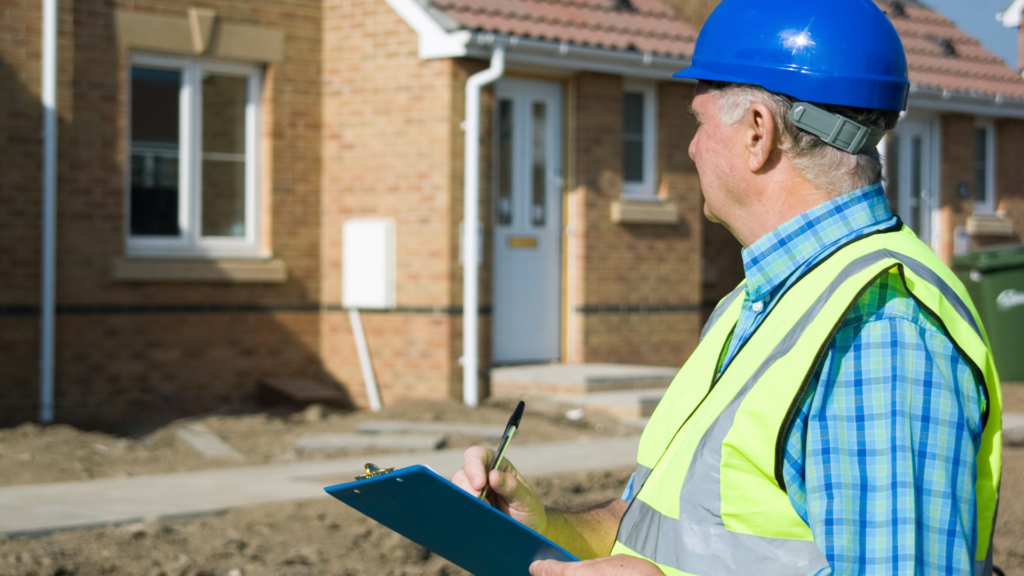- What is Non-Standard Construction?
- Why is a Non-Standard Construction Mortgage Harder to Get?
- The Different Types of Non-Standard Construction Properties
- Eligibility Requirements for Non-Standard Construction Mortgages
- How To Get a Mortgage on a Non-Standard Construction Property?
- Converting a Non-Standard Construction House into a Standard One
- Things To Consider Before Buying a Non-Standard Property
- Key Takeaways
- The Bottom Line
A Complete Guide To Non-Standard Construction Mortgage

You’ve found a home that’s a little outside the box. Maybe it’s got a thatched roof, or it’s built with steel or timber.
It’s everything you want—but getting a mortgage might be a different story.
These kinds of properties fall under ‘non-standard construction,’ and that can make lenders hesitate.
But don’t worry, it’s still possible to get financing—you just need to know what to expect and where to look.
This guide will walk you through everything you need to know about mortgages for non-standard construction, from understanding lender requirements to finding the right options for your unique home.
What is Non-Standard Construction?
Simply put, it’s any building that’s not made from the usual materials like bricks, mortar, or concrete, and doesn’t have a standard tiled or slate roof.
If your property is built out of anything a bit quirky—think timber frames, cob walls, steel, thatched roofs, or even prefabricated elements—it’s classified as a non-standard construction house.
Now, this kind of construction isn’t necessarily a bad thing.
In fact, non-standard construction types in the UK can add unique charm and character to a property. Who wouldn’t want a home with a bit of personality, right?
But here’s where things can get a little bit complicated.
Lenders often consider these properties higher risk because of the potential for structural issues, higher maintenance costs, and the difficulty of reselling them down the line.
Not ideal, but don’t worry, there’s a way around it.
Why is a Non-Standard Construction Mortgage Harder to Get?
Lenders often avoid non-standard construction mortgages due to higher risk. They want to ensure they can recover their loan if problems arise.
Non-standard houses can have more issues, such as higher maintenance costs or structural risks.
For example, timber-framed houses are more vulnerable to fire and damp, while concrete builds could develop cracks over time.
Thatched roofs? Lovely to look at, but they’re a bit of a fire hazard and need replacing every 30 years or so.
And if a property’s not well-maintained, its value can drop faster than the temperature in a British winter—not something that makes a lender feel all warm and fuzzy.
This means that lenders may either decline your mortgage application or offer you more onerous terms.
You might need a bigger deposit, say around 25% instead of the usual 10-15%, and the interest rates could be higher.
You might also find that lenders impose stricter affordability requirements, such as lower loan-to-value (LTV) ratios and higher income multiples.
Sounds a bit grim, but don’t lose hope—there are specialist non-standard construction mortgage lenders who understand these types of properties better.
The Different Types of Non-Standard Construction Properties
Let’s have a look at some non-standard construction types you might come across in the UK:
Quite popular in the past because of how quickly they could be built. They’re charming, especially in rural areas, but they do pose some fire and damp risks.
Timber frames can also be more challenging to insure and require regular maintenance.
Stronger than timber and common in high-rise flats. But steel has its downsides too—it conducts heat and cold, making it a fire risk, and could potentially rust.
Steel-framed properties often need specialist surveys to ensure structural stability.
Some older steel-framed properties were also constructed using asbestos, which requires careful consideration due to health and safety regulations.
Built quickly after WWII to address housing shortages, these houses are still around.
But, some may have suffered from what’s called ‘concrete cancer’, which is as bad as it sounds—it means the reinforced steel inside the concrete rusts, potentially causing the structure to weaken.
There are two types of concrete prefabs to be aware of: poured concrete structures and pre-formed concrete structures.
Poured concrete can be particularly problematic, whereas pre-formed concrete is often considered more reliable by lenders.
Modular Housing
These properties were assembled quickly after the war due to housing shortages.
While modular homes served their purpose, many lack the durability of modern construction standards, making some lenders wary.
Thatched Roofs
Very picturesque, perfect for a countryside escape. But they need a lot of care and maintenance, and thatched roofs aren’t everyone’s cup of tea, especially for insurance companies.
Replacement costs can be high, and they need complete replacement every 30 years or so.
The fire hazard associated with thatched roofs makes insurers nervous, which can lead to higher premiums.
Cob and Clay Lump
Traditional methods used mainly in the 18th and 19th centuries, often found in historic homes. They’re quite eco-friendly, which is a nice bonus, but can struggle with dampness.
Some cob properties have been patched up with modern materials over the years, which can complicate the assessment for a mortgage.
Cob is more durable compared to clunch (a type of chalky limestone), but both types require regular maintenance to prevent moisture damage.
While they allow for more usable indoor space, flat roofs often have drainage issues. Water likes to hang around, which can cause all sorts of trouble if it leaks through.
Flat roofs generally require regular inspections and may need specialist roofing materials for repairs.
Shingle Roofing
Shingles are used for roofing and are typically made from slate, wood, or metal.
While affordable, shingles can be prone to maintenance issues and leaks, depending on the material.
Slate shingles, for example, are more durable than wooden ones but can still be costly to repair.
Wattle and Daub
An old method involving a wooden lattice covered in a sticky material made of soil, sand, and straw.
Although it has good insulation properties, wattle and daub can deteriorate quickly when exposed to rain, making maintenance crucial.
Homes built with single brick walls rather than the usual double-layered construction. These properties can be less sturdy and more prone to damp, making lenders cautious.
Glass-Walled Houses
Modern and stylish, but glass-walled homes can be expensive to maintain and insulate.
They may also have structural concerns, and not all lenders are comfortable with the risks associated with extensive glasswork.
British Iron and Steel Federation (BISF) Houses
Built after WWII, these steel-framed houses were a quick solution to the housing crisis.
While some have been modernised, many still face structural issues that require specialist surveys, making mortgages harder to obtain.
Each of these construction types comes with its own challenges, which makes mortgage lenders cautious. Lenders want to be sure their money is safe.
Some may require specific surveys, like structural surveys or detailed valuations, to decide if they will offer you a mortgage.
Eligibility Requirements for Non-Standard Construction Mortgages
If you’re looking to secure a mortgage for a non-standard property, it’s essential to know the typical eligibility requirements lenders will be considering.
Let’s break down some of the key factors:
- Income and Affordability – Non-standard properties may have higher maintenance costs, so lenders tend to impose stricter affordability checks. Income multiples are often capped at around 3.5-4.5 times your annual earnings. Additionally, your debt-to-income (DTI) ratio may need to be lower—ideally around 30% or below—to prove you have enough disposable income to meet the mortgage payments comfortably.
- Credit History – Having a poor credit history can complicate things further. Lenders who specialise in non-standard mortgages may still consider your application, but they might attach stricter terms. It can be challenging to find a lender that deals with both non-standard properties and applicants with bad credit, so working with a specialist broker is often a good move.
- Age Restrictions – Many lenders have maximum age limits, particularly when lending on higher-risk properties. If you’re approaching retirement age, your mortgage options for non-standard construction properties could be more limited. Specialist products for older borrowers are available, but you may face restricted choices.
- Loan-to-Value (LTV) Ratio – Lenders may ask for a larger deposit on non-standard properties, often requiring a 20-25% deposit, meaning the LTV is typically lower (75-80%). This is to offset the increased risk that comes with these kinds of builds.

How To Get a Mortgage on a Non-Standard Construction Property?
You’ve found a lovely non-standard construction house and you’re ready to make it your home.
To get a mortgage, you need to take a few extra steps, but it’s definitely possible.
Here what you need to do:
1. Get a Detailed Property Survey
The first thing you need to do is get a detailed survey of the property.
This helps the lender understand the structural condition of the house. It also points out any issues that need fixing—lenders love a thorough survey.
Sometimes, they may ask for a Listed Building Survey if your property is listed, or a detailed structural survey if the building has an unusual frame.
2. Work with a Specialist Mortgage Broker
Next, you should work with a specialist mortgage broker. A broker with experience in non-standard construction mortgages can help you find lenders who are more likely to approve your application.
They can also help you with extra requirements, like a higher deposit or special building insurance.
A good broker will know which lenders are more flexible with different property types.
3. Apply with the Right Lender
Some lenders are more open to non-standard construction properties.
High street names like Halifax, Santander, and Barclays may offer these mortgages, but the terms can vary a lot, and some types of construction might be off-limits.
For instance, Barclays won’t lend on defective precast reinforced concrete (PRC) homes, while Halifax might consider it if the property has had an approved repair.
This is where a broker’s expertise can really help—they can guide you to the right lender.

Converting a Non-Standard Construction House into a Standard One
Here’s an idea: what if you could convert a non-standard construction house into something a bit more, well, standard? 😀
This can sometimes be done by modifying the property to reduce the risk in the eyes of lenders.
For example, you could replace a thatched roof with tiles, or reinforce a steel frame to bring it up to modern standards.
These changes can be costly, but if it means you’ll get better mortgage terms or make the house easier to sell in the future, it might be worth the investment.
Plus, it could make the property easier to insure, which is another big tick in the box for lenders.
But, not all conversions are straightforward.
Some property types, such as listed buildings, may have restrictions on what modifications you can make.
In such cases, it’s important to consult with experts and plan carefully before proceeding with any work.
Things To Consider Before Buying a Non-Standard Property
Before buying a non-standard property, there are some key things you should think about to make sure you’re fully prepared.
Let’s go through the most important points to keep in mind.
Survey Reports
A survey is a must-have when you’re buying a non-standard property. This gives you a chance to really understand the property.
A full structural survey is often recommended to spot any potential problems.
Lenders rely on these surveys to decide if they’ll give you a mortgage and what the terms will be.
Surveys can uncover hidden nasties like damp, weak foundations, or other sneaky defects that could cost you a fortune.
Knowing about these issues upfront gives you the power to negotiate a better deal or decide if the property is really worth it.
Future Resale Considerations
When buying a home, you’re probably thinking about living in it, not selling it—unless you’re looking for a buy-to-let. But with non-standard properties, it’s smart to consider future buyers too.
You might love the charm of a timber-framed cottage or the sleek look of a glass-walled house, but selling it later could be tricky.
Not everyone will be keen on quirky features, and some might face the same mortgage challenges you did.
If you ever need to sell quickly, finding a buyer could be tough, especially if the property needs specialist maintenance.
Consider making changes that boost the property’s appeal. Swapping a thatched roof for tiles, for example, could cut maintenance and attract more buyers.
Always keep in mind how easy—or hard—it might be to sell if your situation changes.
Insurance and Maintenance
When buying a non-standard construction property, you’ll also need to think about insurance. Like lenders, insurers can be a bit wary of unusual properties.
You might need to go to a specialist insurer, and premiums can be higher.
But with a bit of searching, or with the help of your trusty broker, you should be able to find a good deal.
Maintenance is another biggie. Non-standard construction houses often need more TLC than your average semi-detached house.
If it’s a thatched roof, be prepared for regular upkeep and a complete replacement every few decades.
Steel frames might need to be checked for rust, and timber frames for rot.
Keeping on top of maintenance is crucial—not just for your own comfort, but also to retain the property’s value.
Non-standard construction properties can also have unique issues like susceptibility to damp or subsidence, which require ongoing attention.
If a property isn’t properly maintained, its value could fall, which is another reason lenders are cautious.
Key Takeaways
- Non-standard construction means anything that’s not built from the usual bricks and mortar, with a slate or tile roof. Think timber frames, thatched roofs, concrete, and modular homes.
- Getting a non-standard construction mortgage can be tricky because lenders see these properties as higher risk. You may need a bigger deposit, stricter income requirements, and interest rates could be higher.
- Specialist lenders and brokers are your friends. They can help you find the right deal and navigate the extra requirements that often come with these mortgages.
- Be prepared for higher insurance premiums and more maintenance. Non-standard homes often need a bit more care and attention to keep them in good shape.
- In some cases, you could modify the property to make it more “standard” and improve your chances of getting a mortgage and reducing costs.
- Survey reports are essential. A detailed survey can help lenders assess the risk and make your application more appealing.
- Future resale might be challenging. Non-standard properties can be harder to sell, and future buyers might also face difficulty getting a mortgage.
The Bottom Line
Buying a non-standard construction property can be challenging, but it also means owning a unique home with character and charm.
While getting a mortgage might require more effort, it is definitely possible with the right approach.
A detailed survey, specialist lender, and a good broker are your best allies. With a broker, you can:
- Access specialist lenders who understand non-standard properties
- Get expert advice on improving your chances of approval
- Reduce errors with paperwork, ensuring a smooth process
- Save time and reduce stress by finding the right lender quickly
If you’re looking to save time and stress in your search for the right broker, get in touch with us. We’ll connect you with a reliable broker who can help you solve your specific mortgage situation.
Get Matched With Your Dream Mortgage Advisor...

Frequently asked questions
Can I convert a non-standard construction house to make it easier to mortgage?
Yes, sometimes modifications can make a non-standard property more attractive to lenders. For example, you could replace a thatched roof with tiles or reinforce a steel frame.
What should I know about maintaining a non-standard property?
Non-standard properties often require more maintenance. For example, thatched roofs need replacing every few decades, and timber frames need regular checks for rot. Staying on top of maintenance helps keep the property’s value intact.
Will insurance be more expensive for non-standard construction?
Yes, insurance can be more costly for non-standard properties, and you may need to use a specialist insurer. The higher risk associated with unusual materials or construction types tends to increase premiums.




